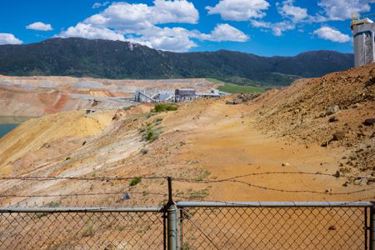Drought Pushes L.A. To Access Superfund Site Source Water


As the current megadrought expands throughout the American West, there has been no shortage of innovative solutions for stretching water supplies as far as they’ll go. But some fear that the latest idea in California may go too far.
“Officials in Los Angeles are setting their sights on a relatively new, almost untapped resource for the city’s 4 million residents: the Superfund site in their own backyard,” Yahoo! News reported. “Nearly 70% of the city’s 115 wells in the San Fernando Valley groundwater basin — the largest such basin under the purview of the Los Angeles Department of Water and Power — have been sitting unused for decades after dangerous contaminants seeped into the aquifer.”
For years, industrial operations in the San Fernando Valley disposed of their waste in the aquifer, polluting it with significant contaminants like trichloroethylene, perchloroethylene, hexavalent chromium, and 1,4-dioxane. Now, Los Angeles is almost finished constructing a $600 million plant consisting of three treatment facilities to remediate the contaminated groundwater and allow consumers to access 87,000 acre-feet of water per year.
As water has become more scarce in recent years, Los Angeles has launched a slew of ambitious plans to keep consumers hydrated, including investment in smart meters, wastewater recycling, and major water storage and reclamation projects. Its plan to treat and deliver additional water from this aquifer appears to be a cornerstone in its larger efforts.
“The restoration of the San Fernando Valley groundwater basin is a considerable piece of L.A.’s plan for the future, which includes big investments in water recycling and stormwater capture as well as a persistent push for conservation, all in the name of reducing reliance on imported supplies,” according to Yahoo! News. “But cleaning decades-old contaminants from a major municipal water source is a massive undertaking.”
The treatment process is expected to include cleaning with hydrogen peroxide, filtering to remove sediment, ultraviolet disinfection, and granular activated carbon treatment. Then it will also go through the standard drinking water treatment process for all effluent in Los Angeles.
Paying for such a critical and ambitious treatment process is no mean feat, and the funding is coming from a variety of sources.
“Some big name companies, including Honeywell and Lockheed Martin, have already agreed to take ownership over some of the decades-old chemicals and committed to funding cleanup efforts or making up the losses in kind,” per the Los Angeles Times. “(And) Angelenos are shouldering some of the cleanup costs … though the EPA and the cities of Burbank and Glendale are also treating water in other parts of the basin.”
To read more about how drought has pushed municipalities to seek alternative drinking water sources, visit Water Online’s Water Scarcity Solutions Center.
